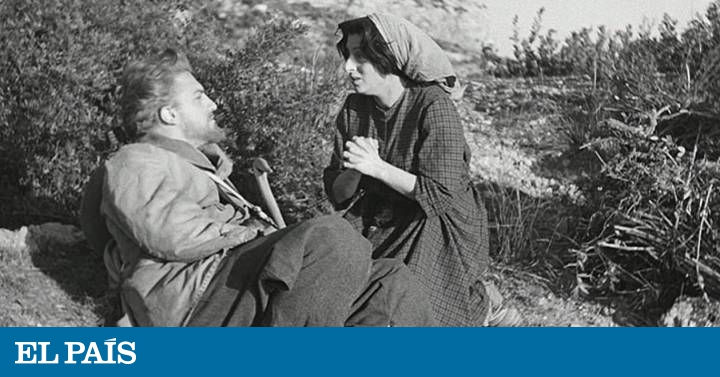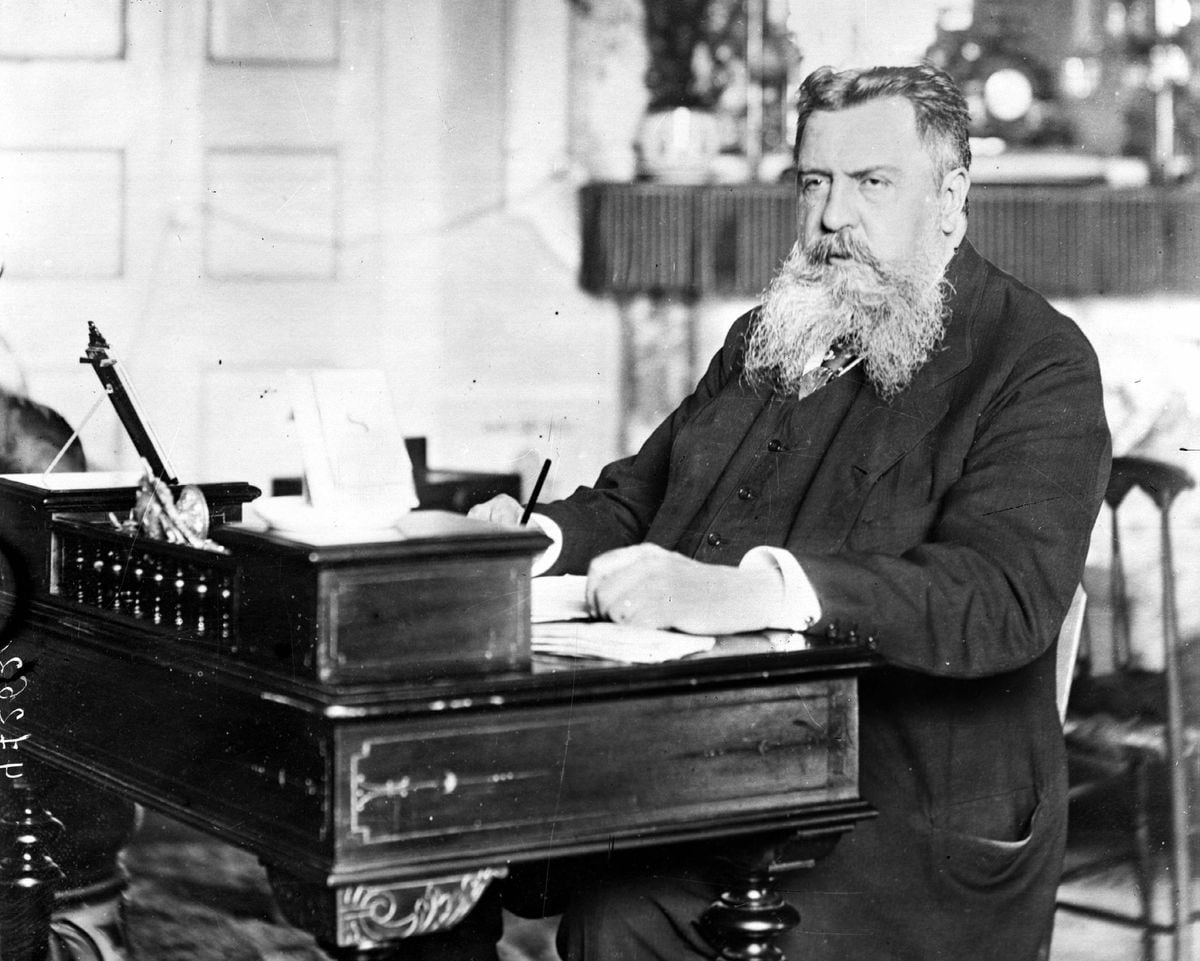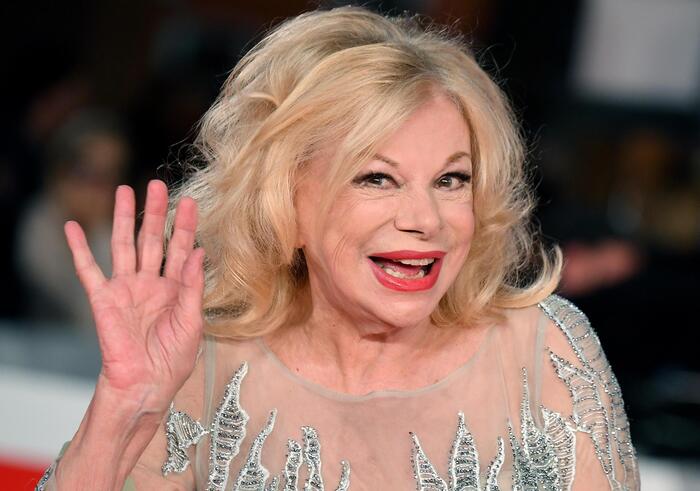Roberto Rossellini premiered at the 1948 Venice Film Festival a film called Love and divided into two parts. The first is based on Jean Cocteau's well-known theatrical monologue The Human Voice (1930) , in which a woman played by Anna Magnani desperately tries on the phone to keep her lover from leaving her. The second is titled The Miracle and its protagonist (also Magnani) is a shepherdess who becomes pregnant by a homeless man she meets in the bush and whom she takes for San José, which leads her to think that she is going to beget a new messiah. The supposed saint is played by Federico Fellini, who also signs the script for that part.
The film was a finalist for the Golden Lion of Venice and for the story there was the controversy caused by its religious theme, especially in the United States, where it was censured for a time by a demand for sacrilege. But it sparked a second controversy that is not so well remembered: an accusation of plagiarism made by the critic and journalist Francisco Madrid in the Argentine magazine El Hogar . Madrid, a Spanish exile in Buenos Aires, affirmed in his article that the plot of El milagro was a carbon copy of the novel Flor de santidad, by Valle-Inclán, in which a naive peasant woman named Ádega also gave herself sexually to a pilgrim to whom confused with a mystical being, perhaps Christ.
The accusation was circulated for a time by the Italian newspapers, but it was soon forgotten because it seemed unlikely that Fellini could have read Valle-Inclán's novel, by then an author of little diffusion in Italy. The filmmaker had not yet debuted as a director, but he had collaborated as a screenwriter in films such as Rossellini's Rome, open city , so he was already a well-known figure and was the subject of several interrogations in which he always denied plagiarism. However, the controversy was never completely extinguished in academic circles and even today essays continue to be written analyzing the coincidences between both arguments.
With some of these studies, a Spanish philologist Manuela Partearroyo stumbled a decade ago at the University of La Sapienza in Rome, who was so fascinated by the matter that she decided to pull that thread. The investigation ended up taking her along unsuspected paths: she did not reach new conclusions about the alleged plagiarism, but in return Valle-Inclán was revealed to her as a kind of missing link that connected that Italian cinema of the 1950s that detached itself from neorealism to embrace the grotesque (with Fellini at the head) and the one who traveled the same route in Spain in the 1960s (Berlanga, Azcona, Fernán-Gómez).
Partearroyo collects the result of her research in the essay Luces de varietés, recently published by the publisher La Uña Rota, in which the philologist explores the common roots of Spanish grotesque and Italian farce and how that curved way of looking at reality is expressed also on the big screen. This connection between Italian and Spanish cinema of those years is not a discovery, evident in cases such as the association between director Marco Ferreri and screenwriter Rafael Azcona, but the appearance of the Galician writer in the equation is new. In the author's own words, the book “is the story of how Valle-Inclán influences the best generation of Spanish filmmakers via Italy. The straight line does not exist in grotesque territory ”.
The philologist affirms that it is not so far-fetched to think that Fellini knew the work of Valle-Inclán, since he remembers that the Galician author lived in Italy from 1933 to 1935 as director of the Academy of Spain in Rome. That time served to establish a relationship with the Italian theatrical avant-garde and especially with one of its most important names, director Anton Giulio Bragaglia, who translated The Horns of Don Friolera and staged the play four times: in 1934, 1937, 1940 and 1951. Partearroyo also stresses that in 1947 a version of Divine Words was released by the University Theater Company of Rome, among whose ranks was none other than Giulietta Masina, by then already married to Fellini.
But regardless of whether there was plagiarism or not, Partearroyo establishes in El milagro the knot of union between the grotesque Italian and Spanish. A point where two similar ways of looking and laughing at life meet. "Right there, when the urgent gaze of neo-realism begins to twist, and before experimentation ends up untying the corset of conventional fictions, a poetic of laughter that freezes in the mouth is outlined with a thick cartoon pencil ”, Writes the philologist, referring to the common origins of the culture of both countries, that is, the Greco-Latin Mediterranean heritage. “Caricature will be a key word in this hopeless affinity, since all the rogues who have come to walk these pages (Fellini, Berlanga, Monicelli, Azcona ... and their grotesque parents or grandparents, Valle-Inclán, Bragaglia and Arniches) have.
In this network of influences and complicities between Italy and Spain, the interrelation that existed in those years between theater and cinema was also very important. Actors that the public already knew from the stage, such as Anna Magnani, Aldo Fabrizi, Totò or the brothers De Filippo in Italy and Manolo Morán or Pepe Isbert in Spain, would be rescued throughout the 1950s and 1960s to enhance that profile popular and subtly critical that it will involve the seventh art beyond neorealism, thus impregnating it with its great cultural inheritances: from the Italian art comedy to the black paintings of Goya, the puppets of blackjack, the farce and the sainete, the harlequin and the jester, the sad clown and the cheating rogue.
Varieties lights. The grotesque in the Spain of Fellini and the Spain of Valle-Inclán. Manuela Partearroyo. The Broken Nail, 2020. 256 pages. 18 euros.


/cloudfront-eu-central-1.images.arcpublishing.com/prisa/JA2J3ADSLZGFTJI5KRKI6PWXUU.jpg)





/cloudfront-eu-central-1.images.arcpublishing.com/prisa/GUAUGNV34NFGFBWRQ4LP4ZWYRA.jpg)
